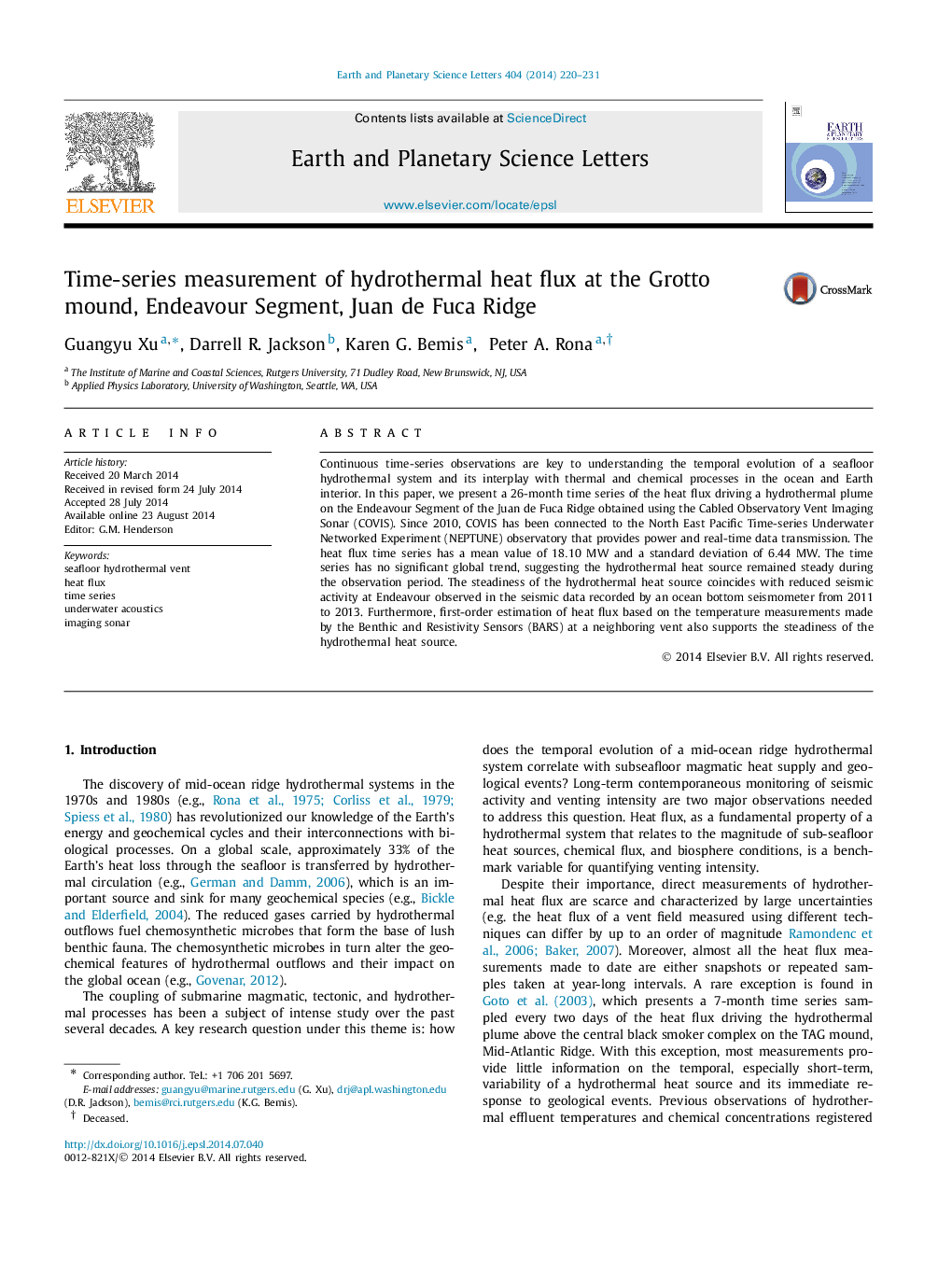| Article ID | Journal | Published Year | Pages | File Type |
|---|---|---|---|---|
| 6429029 | Earth and Planetary Science Letters | 2014 | 12 Pages |
â¢An observatory imaging sonar is used to monitor a deep-sea hydrothermal plume.â¢Processing sonar data yields a 26-month time series of hydrothermal heat flux.â¢The heat flux time series is steady over the 26-month period.â¢Contemporaneous temperature data support the time series' steadiness.â¢The period of steady heat flux coincides with reduced and steady seismicity.
Continuous time-series observations are key to understanding the temporal evolution of a seafloor hydrothermal system and its interplay with thermal and chemical processes in the ocean and Earth interior. In this paper, we present a 26-month time series of the heat flux driving a hydrothermal plume on the Endeavour Segment of the Juan de Fuca Ridge obtained using the Cabled Observatory Vent Imaging Sonar (COVIS). Since 2010, COVIS has been connected to the North East Pacific Time-series Underwater Networked Experiment (NEPTUNE) observatory that provides power and real-time data transmission. The heat flux time series has a mean value of 18.10 MW and a standard deviation of 6.44 MW. The time series has no significant global trend, suggesting the hydrothermal heat source remained steady during the observation period. The steadiness of the hydrothermal heat source coincides with reduced seismic activity at Endeavour observed in the seismic data recorded by an ocean bottom seismometer from 2011 to 2013. Furthermore, first-order estimation of heat flux based on the temperature measurements made by the Benthic and Resistivity Sensors (BARS) at a neighboring vent also supports the steadiness of the hydrothermal heat source.
